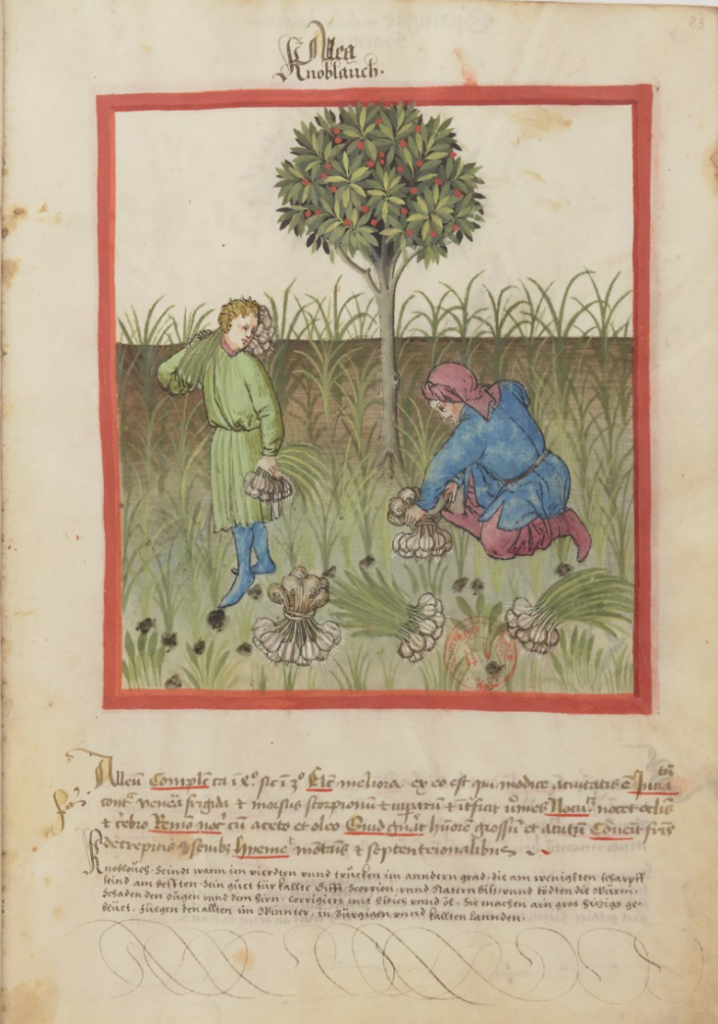Garlic (Allium sativum) is one of the oldest cooking ingredients and was already used in Ancient Egypt and Mesopotamia; in fact, the Arabic word thūm (ثوم) goes back to the Akkadian šūmū (from the Sumerian sum). The plant was grown along the northern Mediterranean very early on and the Ancient Greeks were probably the first to preserve garlic by smoking it. According to Dioscorides, it clears bronchi and is a remedy for chronic coughs when eaten raw, baked, or boiled. While the Greeks appreciated the flavour garlic imparted to food, they were less impressed by the odour of garlic on the breath.
It is one of the vegetables mentioned in the Qur’an, alongside cucumber, lentils and onions. It came in two varieties: wild (برّي, barrī) and cultivated (بستاني, bustānī), and became a staple in Arab cooking; according to the author of The Sultan’s Feast, ‘garlic draws forth the aromas of oils in broths, seeds and vegetables, and enhances their flavour.’ Garlic was often cooked with vinegar and oil and garlic to make a sauce. It was also used frequently in fish dishes. There’s even an Egyptian recipe for sour yoghurt and garlic, which results in something most people today would recognize as tzatziki. Garlic was a particular favourite in medieval Andalusian cookery, and often cooked in vinegar.
Medicinally, it was recommended as a diuretic, to remedy flatulence and various dermatological conditions, while chewing its leaves cures eye inflammation. According to the 12th-century physician Ibn Butlan, garlic is partiuclarly good for older people and in winter time. Howver, he warned that it should not be overcooked because then it loses its effectiveness, especially when it is prepared with vinegar and eaten with milk or fish.

